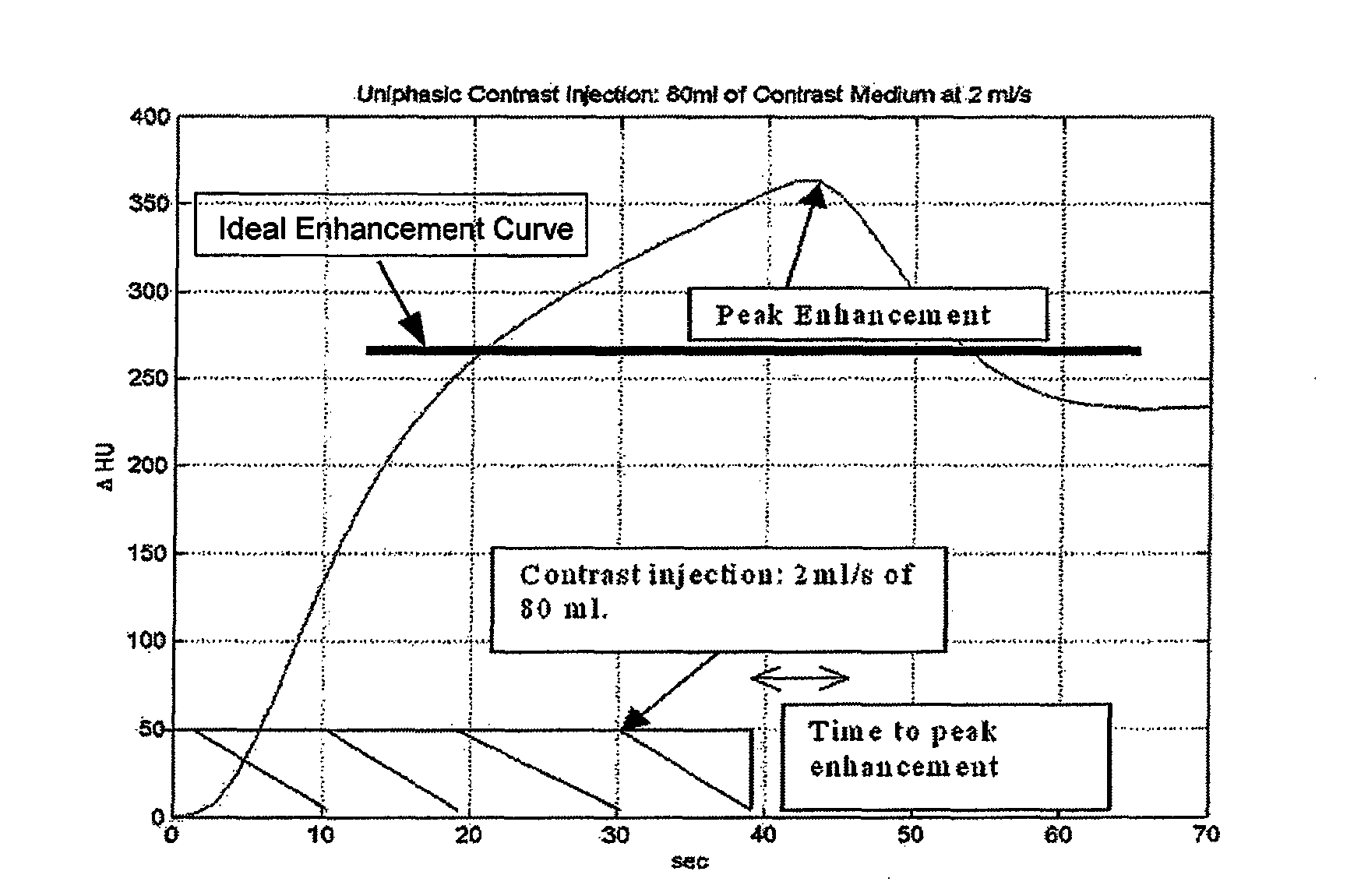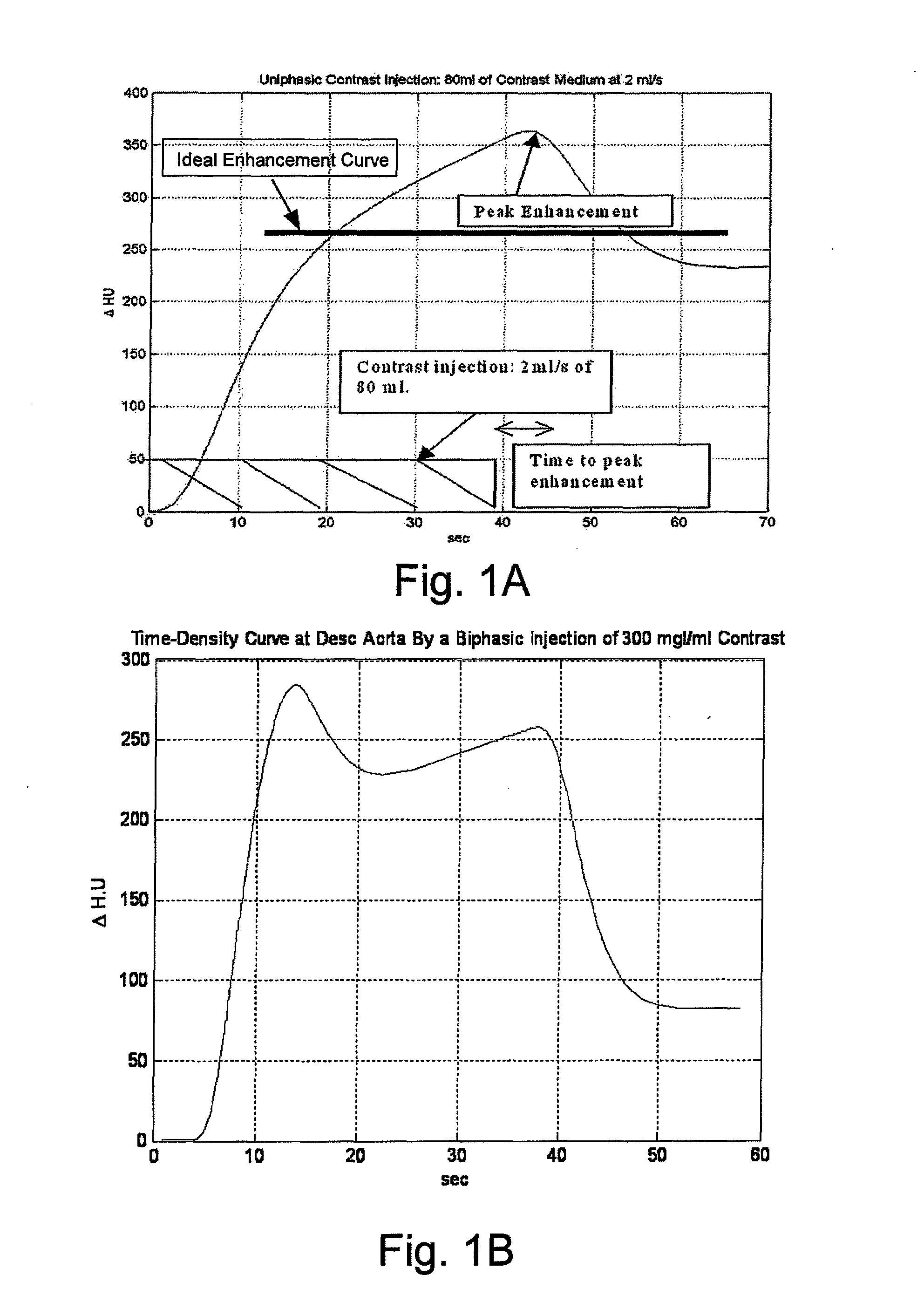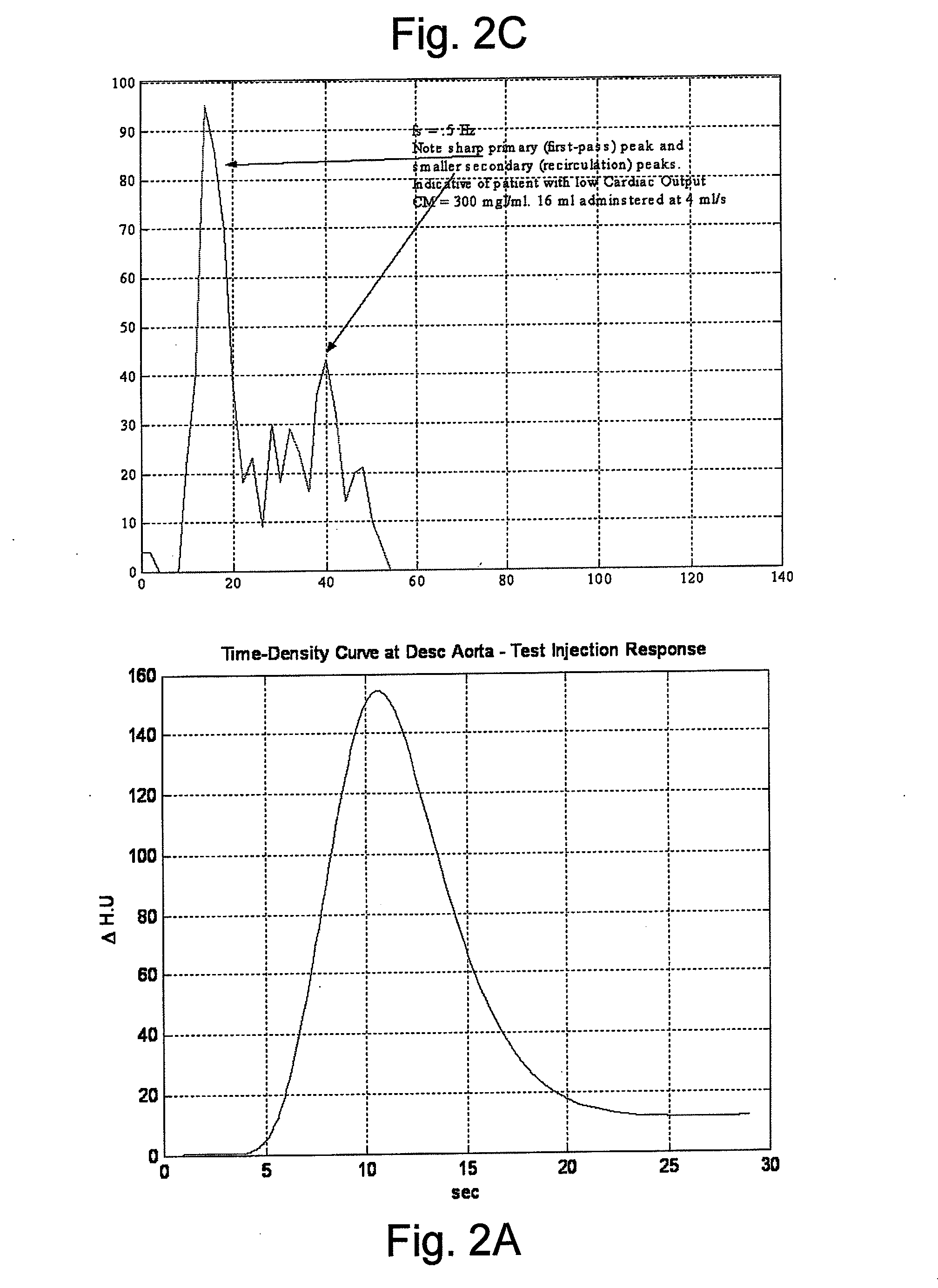Modeling of pharmaceutical propagation
- Summary
- Abstract
- Description
- Claims
- Application Information
AI Technical Summary
Benefits of technology
Problems solved by technology
Method used
Image
Examples
Embodiment Construction
[0091]FIG. 1A illustrates a typical time-enhancement curve obtained with a single phase contrast-enhanced CT scan of a blood vessel. The units, HU are Houndsfield Units, a measure of X-ray absorption density that is translated into signal intensity in an image. FIG. 1A illustrates a peak enhancement at a time of about 45 seconds. In many imaging procedures, the time-enhancement curve is preferably uniform around a specified level (as illustrated by the thick black line in FIG. 1A). When the curve is not uniform or flat, a less than optimum image may result in an erroneous diagnosis in such imaging procedure. As advances in scanning technology enable image acquisition in less time, uniformity of enhancement over longer time periods may decrease somewhat in importance, but proper timing of a scan relative to contrast injection and avoidance of too much contrast or too little contrast remain important.
[0092]FIG. 1B illustrates a typical time-enhancement curve obtained with a dual phase...
PUM
 Login to View More
Login to View More Abstract
Description
Claims
Application Information
 Login to View More
Login to View More - R&D
- Intellectual Property
- Life Sciences
- Materials
- Tech Scout
- Unparalleled Data Quality
- Higher Quality Content
- 60% Fewer Hallucinations
Browse by: Latest US Patents, China's latest patents, Technical Efficacy Thesaurus, Application Domain, Technology Topic, Popular Technical Reports.
© 2025 PatSnap. All rights reserved.Legal|Privacy policy|Modern Slavery Act Transparency Statement|Sitemap|About US| Contact US: help@patsnap.com



